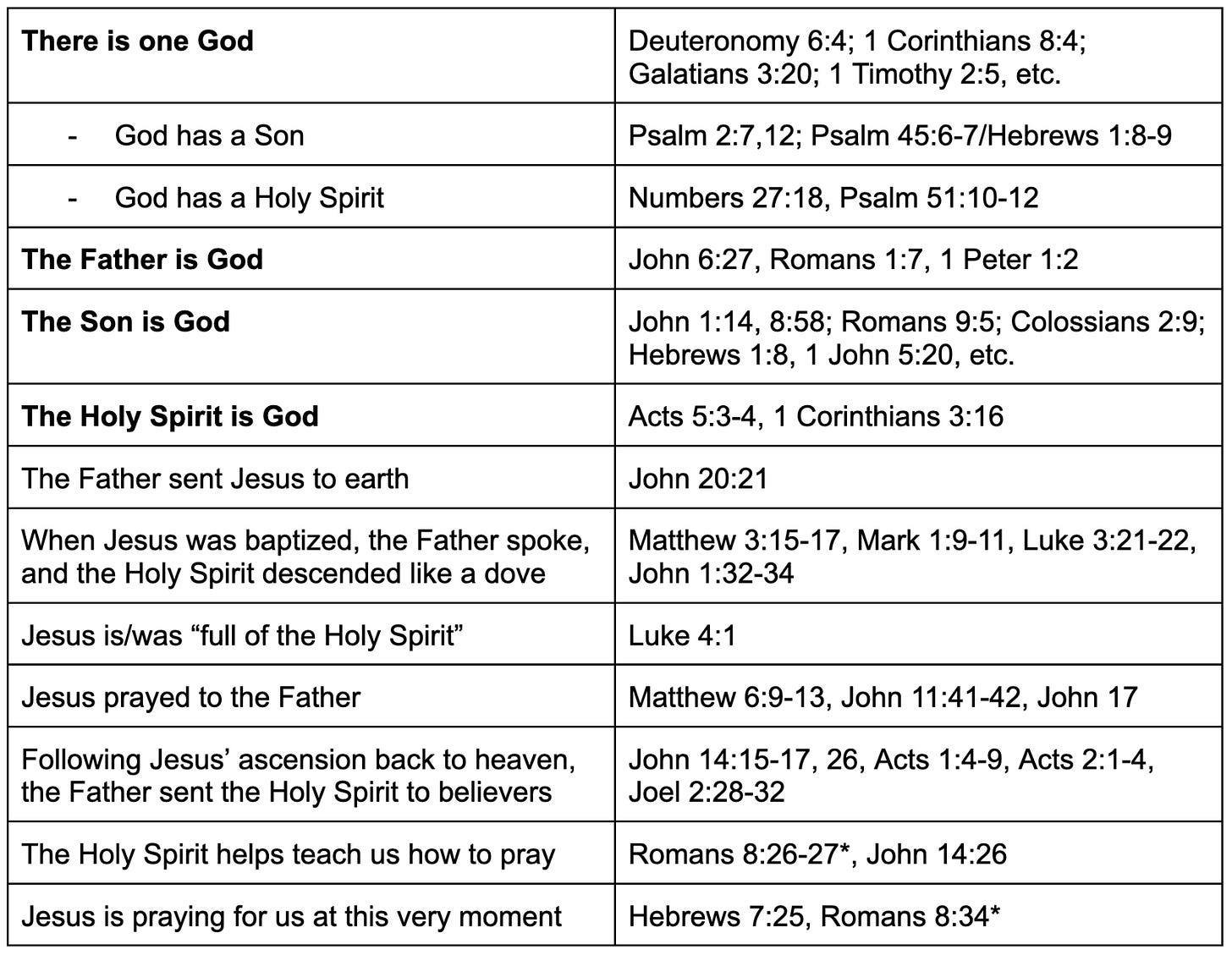Deep Dive - The Doctrine of the Trinity
What does it mean that Christians worship one God in three persons?
- Romans 11:33-36 -
What is the Trinity?
John 1:1-5***
Greek philosophy connections: archē (beginning/ruling principle), logos (word/ultimate reason)
The Trinity is the doctrine that God is one being in three persons: Father, Son, and Holy Spirit.
These are not three unique gods, but are three distinct “persons” of the same God.
“(W)e worship one God in trinity and the trinity in unity, neither blending their persons nor dividing their essence. For the person of the Father is a distinct person, the person of the Son is another, and that of the Holy Spirit still another. But the divinity of the Father, Son, and Holy Spirit is one, their glory equal, their majesty coeternal.”
Excerpt from the Athanasian Creed (ca. 5th century)
“The most difficult thing about the Christian concept of the Trinity is that there is no way to perfectly and completely understand it. The Trinity is a concept that is impossible for any human being to fully understand, let alone explain. God is infinitely greater than we are; therefore, we should not expect to be able to fully understand Him.”
Got Questions, ‘What does the Bible teach about the Trinity?’
The word “Trinity” is not directly found in Scripture. Rather, the term is used to characterize the fundamental nature of God, which is discussed at length throughout Scripture. A few examples:
How do we define/explain the Trinity?
Many of the early Church’s most important battles were over defining the doctrine of the Trinity.
In fact, the first four ecumenical councils* each spent significant energy clarifying the doctrine.
(*Protestants generally affirm the first 4-7 ecumenical councils as being authoritative.)
“We believe in one God, the Father almighty, maker of heaven and earth, of all things visible and invisible. And in one Lord Jesus Christ, the only Son of God, begotten from the Father before all ages, God from God, Light from Light, true God from true God, begotten, not made; of the same essence as the Father. Through him all things were made. (...) And we believe in the Holy Spirit, the Lord, the giver of life. He proceeds from the Father and the Son, and with the Father and the Son is worshiped and glorified. (...)”
Excerpt from the Nicene Creed (325/381 AD)
Often, Christians have tried to make analogies to explain the Trinity. But these often fall short, as God’s nature is totally unique and distinct from the rest of creation. Attempts to compare Him with the nature of his own creation thus struggle to portray the full scope of who God is.
To illustrate this, check out St. Patrick’s Bad Analogies:
Here are a few resources for further study:
The Trinity: No Christianity Without It (Kevin DeYoung, TGC)
What does the Bible teach about the Trinity? (Got Questions)







